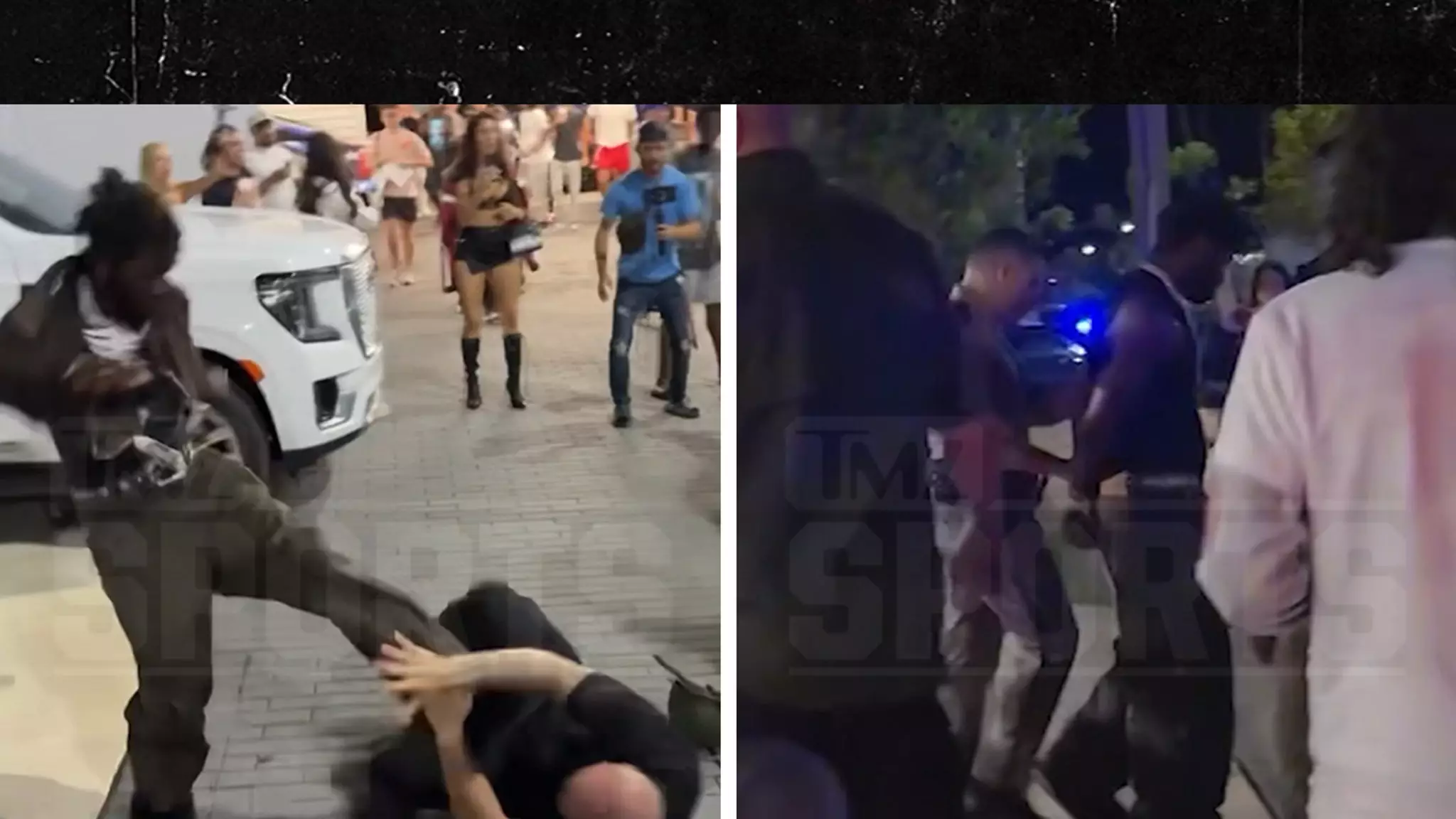In the early hours of a seemingly typical Friday night, chaos erupted in Miami as NFL superstar Antonio Brown found himself embroiled in a tumultuous brawl outside Adin Ross’ Brand Risk kickboxing event. The sequence of events is not merely an incident but a reflection of the ongoing struggles that have come to define Brown’s post-NFL life. At around 3 AM, Miami police received multiple calls about a disturbance in the vicinity of NE 2nd Avenue and 67th Street, prompting an investigation that unfortunately lacked significant outcomes—at least for the moment. No arrests were reported that night, and as it stood, there were no confirmed injuries linked to the fracas.
However, the implications of that night run deeper than the surface-level legalities. The disturbing footage captured by bystanders shows a chaotic scene in which Brown, initially caught in an altercation, finds himself aggressively pulled to the ground. This moment of vulnerability starkly contrasts his well-established persona as an elite athlete known for his physical prowess. One can’t help but ponder what internal struggles or external provocations led to this episode. While many may see it as just another night gone awry for a celebrity, it speaks volumes about the societal pressures faced by public figures, particularly those like Brown who have experienced both astronomical success and profound personal strife.
The Aftermath: A Social Media Saga
As videos of the incident surfaced online, the dialogue around Brown’s actions quickly escalated in digital spaces. Despite the bedlam, Brown maintained he was the victim in this encounter, alleging he had been attacked by multiple individuals attempting to rob him. His declaration via social media emphasizes a narrative of self-defense, which has further stoked the flames of public debate surrounding his actions during the altercation. Was it reasonable for him to resort to violence, or did his response perpetuate the cycle of chaos for which he has unfortunately become known?
After the initial confrontation, Brown was briefly placed in handcuffs but returned to the venue about 20 minutes later. He interpreted this as a simple detainment rather than an arrest, reinforcing his stance of innocence. Perhaps more disconcerting are the reports suggesting gunfire was involved, with some claiming it was Brown who fired shots in self-defense. This aspect introduces a chilling element to the story, transforming a brawl into a matter of life and death. Were those gunshots a reckless response, or do they encapsulate the fear and desperation one feels when cornered? The dichotomy of public perception separates those who see him as a flawed human trying to survive and those who deem him as a man perpetually courting disaster.
The Broader Context: Mental Health and Celebrity Culture
Brown’s latest escapade is indicative of a much larger issue that plagues professional athletes—mental health. The pressure to maintain an immaculate public image while dealing with personal demons can be overwhelming. The glitz and glamour of fame often mask the underlying trauma and struggles these individuals endure. In an era where mental health conversations are becoming increasingly prevalent, Brown’s situation highlights the complexity of fame and the urgent need for supportive infrastructure for athletes transitioning out of competitive sports.
It is essential to note that the conversation surrounding Brown is not merely about his antics; it is about understanding the human condition and the myriad challenges faced by those thrust into the spotlight. His alleged experiences of being “jumped” and threatened highlight a potential victimization that complicates the narrative of culpability often thrust upon public figures. The apparent lack of empathy in some reactions may speak to society’s failure to grasp the multifaceted nature of mental health issues, especially in relation to fame.
The Fine Line of Accountability
As the public continues to speculate about the incident, questions arise about accountability—both for Brown and the individuals involved in the altercation. What constitutes acceptable behavior in the face of provocation? Are we witnessing an escalation in violence among celebrities, or are these isolated incidents that deserve individual attention? The undulating spectrum of responsibility in these scenarios requires nuanced discourse rather than blanket judgments.
Brown’s turbulent journey thus far suggests a cautionary tale for those who idolize athletes and celebrities. The shiny veneer of success often conceals the cracks beneath, and it is vital for the public to engage with these stories thoughtfully. Rather than casting judgment with the immediacy of social media, recognizing the layers of complexity in Brown’s life could lead to deeper conversations about mental health, the nature of fame, and how society can better support those who find themselves in the labyrinthine journey of celebrity life.

